NATURE INSPIRED INVENTIONS --- Submarines; and I measured the depth of the sea, it was 1500 fathoms deep, with a mean breadth of 20 miles. Then, we began descent.
From the beginning of time, man have always nursed the idea of traveling under the water like the fishes, whales and other marine lives. He has always seen how sharks, dolphins and other marine lives jump out of the water and immediately dive in without a prior notice or indication of their presence. Man couldn't help but realize the lesson nature was trying to teach him about the importance of traveling underwater. One thing he could not fail to realize was the fact that the application of this idea would give him the element of suprise he needed to win his wars. Thus, man began to seek for ways to apply this idea he got from nature.
Application of this idea can be seen displayed in cases like when the enemy side crosses over to a particular territory they want to conquer by swimming/wading through the water, while using a small pipe which comes out of the surface of the water to breath in and out while they are still inside the water.
As man advanced, and with each new century, better submarines were invented. But in all these, it wasn't until the 19th century did man build a vessel worthy to be referred to as a submarine. This was first designed in brussels, you could locate this design as part ). At first, man's reason for building submarine was strictly for warfare, as it provides him the stealth he needs when approaching enemy's waters. But in the last 50 years, a better use of submarines have been found as it is now used for scientific and archeological purposes. This makes the submarine one of the greatest inventions made by man.
It is known that de niros company was the first to build a 20th century submarine, lets get to know how the submarine came to live.
In today's article, we will be discussing on submarine, how they came into existence, different kinds of submarines, it's basic parts and it's working principle and we will get to see how nature inspired it's invention.
Before that, i will suggest you travel through the united states by exploring guides on The foodies checklist and restaurants marker to meet some of the best restaurants in different cities.
SUBMARINE
A submarine is defined as a vehicle that can dive into the deepest part of a sea and also has the ability to travel underwater. Mind you that submarines are different from submersible crafts as they don't only have the ability to dive into the water, but they can be used to explore the Marine world. The submarine is one of the greatest human inventions inspired by nature as its uses ranges from military, to recreation and research, covering basically, the most essential needs of man.
We have so many types of submarines, but we will get to appreciate them if we understand how submarines became what they are today.
HISTORY OF SUBMARINE
The origin of submarine, can be dated as far as 332 BC. It is said that in 332 BC that Alexander the Great, in his desire to study fishes had himself lowered into the sea in a glass barrel. Though this glass barrel is not worthy to be regarded as a submarine, it shows that man's desire to travel underwater didn't start today. But after the 332 BC, no one heard of anything anything related to submarine till in 1578 when William Bourne, who was a mathematician and an innkeeper published his work, Inventions or Devices. In his book, he described how it is possible to sink a ship and make it rise again by varying the volume of the ship. He said when the ship is contrasted, the boat sinks, but when the volume is expanded, it floats upward. Though this idea isn't very correct, but it gave a clue on what man really needed to do to build a submarine.
The first underwater craft was built by a Dutch inventor known as Cornelis Van Drebbel in 1620. This vessel built by this Dutch inventor was able to carry 12 oarsmen and several passengers through the Thames River under the water for long hours. The oxygen supply in the boat while it was underwater was replenished by the air tubes that comes out of the surface of the water. But this submarine wasn't used for war.
The first submarine to be used for war was the egg-shaped craft known as the Bushnell's turtle, named after its inventor David Bushnell in the 1770s. This submarine could only carry one person. This submarine worked in the same principle as the submarines we have now, the only difference is that it was hand operated, and the tank was emptied after it was filled by a hand pump. Due to the fact it lacks a constant supply of oxygen, it could only be used for half an hour before it has to resurface, or else it's pilot dies from suffocation.
No other remarkable submarine was invented till the 1800 when Robert Fulton an American inventor built a submarine which he named the Nautilus. The nautilus (which looks so much like the modern submarine) came with features like the rudders which aided to control vertical and horizontal movement. It also had compressed air to act as its underwater supply of oxygen. When this submarine was in the surface, it was propelled by its sails that are attached to a folding mast, while when submerged, this submarine was powered using a four-blade propeller that was hand-operated.
In the 19th century, scientists began to build a more better means of submarine propulsion. The experimented on power sources like air, electricity, steam e.t.c. The first submarine to have an efficient source of power was built by John Philip Holland in 1898, yet another American inventor. He used a dual-propulsion system. On the surface of the water, the vessel depended on a gasoline engine, but when it is under water, it is propelled by an electric motor.
In 1906, the German built a submarine which operated using the diesel engine. With the invention of the periscope and the propelled torpedo, the submarine became again a very important machine for warfare. During the World War I, the Germans built the U-boat. This submarine is responsible for the havoc that happened to merchant vessels and warships in the Atlantic.
War brings the need that inspires military invention, thus, during the World War I and II, more and more improvements were made in the already existing submarine. When underwater sound devices were developed, it made the submarine more deadly as it can hear enemy ships approach before they are close by, giving the crew in the submarine enough time to prepare and mount an unexpected attack against the opposing side. Also, the sound devices also made it possible for submarines to communicate with each other. But still, the submarine had a problem, as it still needs to come out of the sea from time to time for it's battery to be recharged.
Before the end of the World War II, the German Navy built a Submarine called the Snorkel, which could be recharged while it is at the periscope depth under the water. This invention really did increase the amount of time a submarine can stay underwater. The British Navy also came up with a wonderful idea in 1954, that is to power turbines using hydrogen peroxide fuel. This, also was a very great improvement in the submarines.
In all these, the greatest discovery man made while in the advancement of submarine is the discovery of how to apply nuclear energy to the propulsion of submarine. The first submarine to be propelled by nuclear power was the USS Nautilus launched in 1954. In August 1958, a submarine known as the USS seawolf was launched and it did set a record of traveling underwater for 60 days before coming up the surface of the water. Another submarine known as the USS Skipjack was launched in 1956.
Submarines kept on advancing, before the year 1988 was over, almost all the submarines in the world have become nuclear-powered, each with an ability to travel for at least a distance of 640,000 km before it comes up again to the surface for refuelling. Right now, crews of submarines can stay months in a submarine submerged underwater.
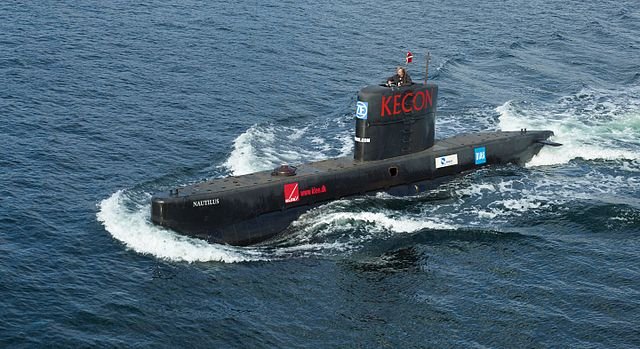
Picture by Frumperino - Wikicommons CC BY-SA 3.0
UC3 Nautilus
Now that we have seen how submarines advanced to the stage that are now, let's get to know the kinds of submarines, and how to identify them.
KINDS OF SUBMARINES
Before we consider the kinds of submarines we have, it is worth noting that all submarines are classified into either, military submarines, scientific submarines or pleasure submarines. Just as their names implies, the military submarines are used for military purposes only and the are built to be able to withstand enemy fire. The scientific submarines are built to be used for scientific exploration. Thus, using the scientific submarine, the floor of water bodies like the lake and oceans and the behavior of marine lives, can be observed. Pleasure submarines are always built to be small, but very expensive. Mostly used by the rich people whenever they want to admire the beauty of the world underwater.
Now considering the kinds of submarines, we have the midget submarine, the U boat, Deep submergence vehicile, recreational submarine and merchant submarine.
Deep Submergence Vehicle (DSV)
The DSV is among the kinds of submarines that are built to be used for deep water research purposes. Due to its use as a research vehicle, the DSV is also known as the Deep Submergence Research Vehicle. The DSV can be built to be controlled by a pilot or by a computer.
Merchant Submarine
The Merchant Submarines are designed to be used to perform trade. The merchant submarine can be demoted by the fact that it doesn't have ammunition like the military submarines. The first merchant submarine was made by the Germans.
Midget Submarine
Without being informed, it is logical to think that submarines vary in weight. Any submarine whose weight is less than 150 tons, that submarine is called a Midget Submarine. Midget Submarine are normally driven by one or two individuals, but it has the capacity to carry up to 9 persons at the same time. The midget submarine is not built in such a way that it's occupant gets to live in it, it is mostly built to work hand in hand with a surface ship. We can have both a military midget submarine, and a civilian submarine. Those midget submarines that are used for civilian purposes are sometimes referred to as submersibles.
U-Boat
The U-boats are submarines made by the Germans during the World War II. These submarines caused so much destruction especially in the battle that took place in the Atlantic. It is said that this submarine caused so much havoc that Winston Churchill who was the British Prime Minister at that time thought Great Britain would have to consider surrendering to the Germans.
Recreational Submarine
This kind of submarine is also known as the personal submarine and it can be used for either recreational or research purposes. Today, these submarines are of great importance. The first recreational submarine ever built by man was built by Graham Hawkes.
PARTS OF A SUBMARINE
Even though we have different kinds of submarines, all of them do have similar basic parts, as no submarine can do without them. Let's get to know about these basic parts and their functions.
Outer Hull and Pressure Hull
There are normally two hulls in most designs of submarines. Those two hulls are the outer hull and the pressure hull. In the submarine, the hull where the communications, weapon control systems, battery banks, main and auxiliary machinery, and control room are housed, is known as the pressure hull. The reason why the pressure hull is called the pressure hull is due to the fact that it is built in such a way that it can endure the pressure exerted on it by the surrounding water when it is at a depth in the ocean or sea.
The outer hull acts like a house to the pressure hull. The outer hull is not pressure tight as the pressure hull, but that is really not something to worry about as whenever a submarine submerges, that little space between the outer hull and the pressure (inner) hull remains filled with water, thus the pressure inside cancels the one acting outside making hydrostatic pressure on it negligible.
Main Ballast Tanks (MBTs):-
Remember that space we said it is between the outer and the inner hulls, which is normally filled with water that space is normally divided, thus making it seem as if what we have between the space are tanks. This tanks are what we refer to as Main Ballast Tanks. The way these tanks are distributed round that space between the inner and outer hull, is dependent on the shape of the submarine vessel, and how these hulks interact. Strategic point that these tanks can be kept is at the forward and after regions.
The Rudder and stern planes
The work of the rudder in submarine is to enable the vessel to be directed from one side to the other. The rudder is always aligned vertically. The stern planes are aligned horizontally, and when they are moved, the submarine moves upwards or downwards.
The Propeller
The submarine has propellers that are powered by a generator and a turbine driven by steam. The steam needed to drive this turbine is created by the nuclear reactor.
The Nuclear Reactor
This is more like a glorified steam engine and it is normally located at the rear part of the submarine. Its job is to produce the steam needed to drive the turbine. Since we are dealing with radioactive element, the reactor is normally protected using a metal casing that weighs more than 100 tons. It also has an alloy inside this casing whose job is to protect the radioactive fuel rods.
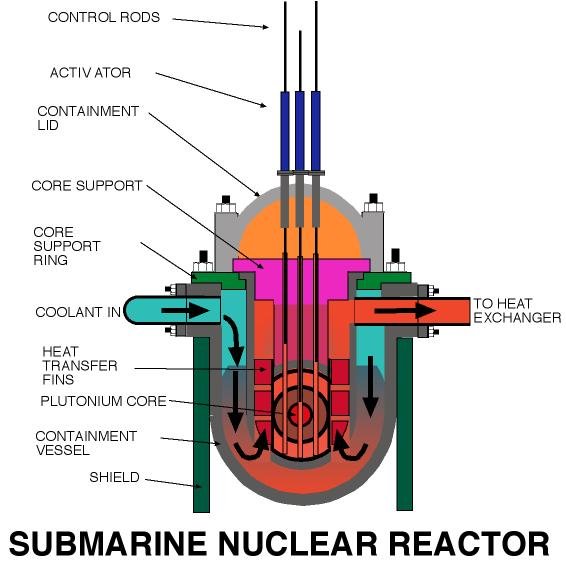
Picture by Webber - Wikicommons CC BY-SA 3.0
Sonar Sphere
It is the sonar that helps submarines to detect objects that are in the water. The sonar sphere in submarines are located at the front of the submarine. The sonar uses the echo it receives when the sound it emitted out strikes an object.
Atmosphere Control Equipment
Since there is no real means of releasing the carbon dioxide produce due to respiration, if it is allowed for sometime, the carbon dioxide could grow to an amount that it could suffocate someone. Thus, using this atmospheric control equipment, the air the crew breaths are decontaminated of the carbon dioxide and impurities in it, making the air inside the submarine breathable.
Distilling Plants
Every Submarine crew depends on the water body it travels on for water. But these sea water are salty due to the minerals they contain. Submarines do have distilling plants for purifying the saltwater making it free for drinking.
The Control Room (or attack center)
This is the room were all the operational controls for the submarine, including controls like sonar, navigational, communications, and weapon system on submarine are found. The control room is regarded as the nerve center of the submarine, because it is from this room that the whole vessels activities are directed.
HOW DOES A SUBMARINE FLOAT AND SINK
In the last discussion, we learnt how ships float, you can check it out here if you missed it. Submarines float based on the same principle as ships and as every other object that floats. Our major concentration should be how they sink into the depths of the sea, and rise up to the surface when there is need to.
Under the parts of Submarines we talked about the ballast tanks, which are tanks built in the space between the inner and the outer hulls. Whenever a submarine wants to submerge itself into the sea, or any other water body, a valve is opened and water is allowed to fill these ballast tanks, thus increasing the mass of the submarine and invariably making it's density to be more than the density of water, thus causing it to sink.
Whenever it is desired that the submarine should come out to the water surface, with the help of highly compressed air cylinder all those water that have been allowed to fill the ballast tank are pumped out, and then the tanks are filled with air, making them lighter. In that process there is a reduction in density, thus, the submarine rises up to the surface.
Note:- One can easily notice the tanks that is located at the front side of the submarine. Those tanks are referred to as trim tank, and with them the pilot of the submarine can adjust the nose of the vessel either in the upward direction or in the downwards direction.
WHAT POWERS SUBMARINES
If you take a look at other means of transportation like the aeroplanes, trucks, trains, motorcycles e.t.c you will realize that almost all of them operate using the internal combustion engine. Mind you that internal combustion engines depend on oxygen from air for combustion, and air is something that is lacking at the depth of the sea. Thus, using an internal combustion engine to power a submarine while it's at the depth of the sea is not feasible.
The earliest forms of submarines were built to be a mixture of diesel and electric engines. The diesel engine's work is to rotate a shaft, and not the main propeller. There is a way the shaft is connected in such a way that it's rotation results to the charging of the submarine's batteries. When these batteries are fully charged, only then can the submarine go into the depth of the water. While it is at the depth of the water, it relies totally on the power stored in those batteries.
There are so many disadvantages associated with this early submarines, as one can't leave in a moment notice, as one needs to charge the battery before travelling into the sea. As the world advanced, a more better submarine were built. This new model of submarine are powered by nuclear reactors inside them. The good thing about this nuclear reactors is that they don't require air, thus they can produce energy needed to power the vessel even at the deepest part of the sea.
HOW DO SUBMARINES MOVE
Just as the airplane wings are used in moving the plane up and down, the submarine has the hydroplanes which does the same job of moving the plane up and down. Also, submarines do have a rear wing, commonly referred to as rudder. Using the rudder, it takes turns.
HOW DO MEN IN SUBMARINES SURVIVE LONG HOURS IN IT WITHOUT SUFFOCATING
I guess you must have wondered how crews in submarines get the oxygen they need. Man is not like any of these aquatic animals that can stay long in water without suffocating. Even if the crew of the submarine enter into the vessel with cylinders filled with oxygen, do they come to the land everyday to refill it? How is it that we have never heard of someone dying as result of suffocation? The answer to these questions is very simple.
The crew of submarines vessels produce the oxygen they need inside the submarine through a process known as electrolysis. During the electrolysis process, the hydrogen and oxygen in water is separated by passing a direct current to water. Since water is readily available in the ocean, and submarines have enough electricity stored in its batteries, oxygen is not really a problem.
USES OF SUBMARINES
Just as I stated earlier, the importance of the submarine is too much that one can't stop overemphasizing on them. We already know that the uses could either be military, research, or recreational. Let's consider these uses in detail.
Military Purpose
It was the need for a way an army would enter into an enemies water without being detected and utterly crush the enemy side by attacking when they least expect it, that brought the need for man to invent the submarines. In most advanced countries, more than 2% of their naval vessels are submarines.
Research Purpose
In the early times, what was underwater was a huge mystery to man, but when man invented the submarine, to perform research underwater became very easy. Right now, Scientist can travel even to the deepest part of the sea and even study the behavior of fishes and other marine lives without dying in the process.
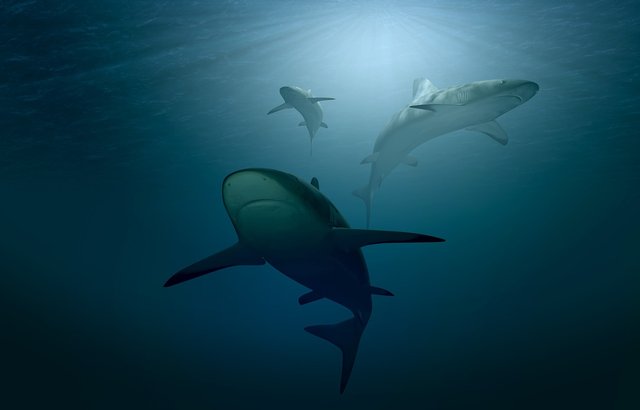
Pixabay.com: Sharks moving underwater
Tourism
Right now, tourists don't only go for sight seeing on land, they even go as far as close to the ocean floor to see the beauty in nature. All these were made possible by the invention of the submarine. The submarine carries them right into the middle of the sea, and as well keep them safe from the attacks of dangerous aquatic animals.
CONCLUSION
CONCLUSION
Just the way a faithful teacher keeps on repeating a particular information he/she feels it's of great importance, till it "sinks" into his/her students "brain", that's the same way nature, man's first teacher does whenever she needs man to learn something vital from her. Something about submarines marvels me when I think about them. Unlike other nature inspired invention that nature hide the secret in one or two places, nature hid the idea of the submarine in more than one marine life, up the extent that it isn't seen as a secret anymore. It is as if nature wanted to make sure that man doesn't fail to see this idea.
Still, it took man time to realize it. Regardless, since man discovered that secret and invented the submarine, it felt as if man have finally conquered the whole world. Mind you that before the invention of the submarine, man wondered what was in the deepest part of the sea. There is a saying that says "What you don't know is more powerful than you are". When man finally built the submarine, he conquered the "last known world" when he sailed deep into the sea.
Probably the most important invention, what haven't man achieved with it? All we know about the sea and the life in it, we learnt when we explored the sea using the submarine. Think about it, don't you see that nature wanted man to invent the submarine because it will help him discover those other secrets nature hid in the deepest part of the sea?. Well if it was really nature's intention, man have completed the first mission, which is to invent the submarine. Right now, let's be on the look out for the next amazing invention that would be inspired by what man observed deep in the sea while exploring the last world he conquered in his submarine.
Till we meet again
Check out this DIY article: What Is Honda B12 Service? – (Everything to Know)
REFERENCES
Military History of Submarines
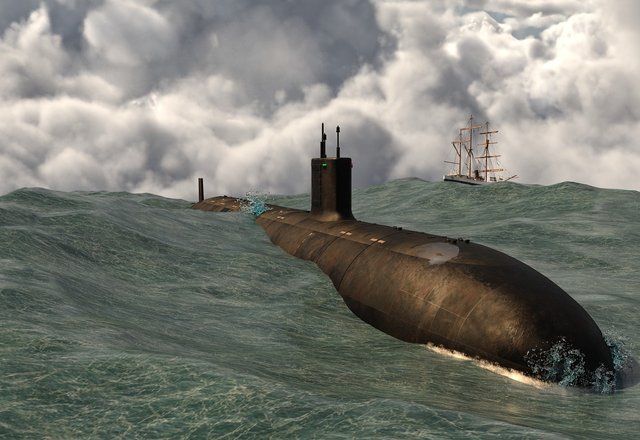

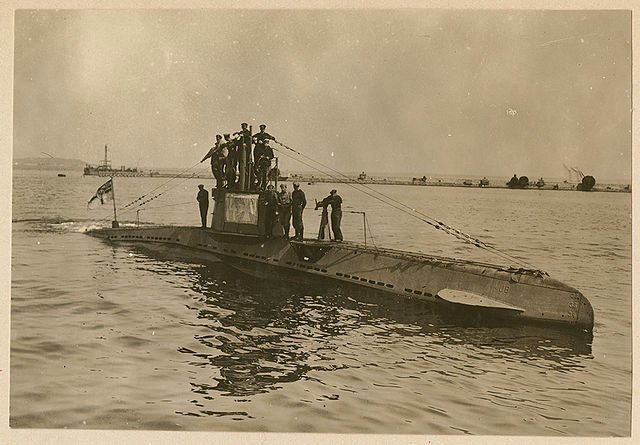
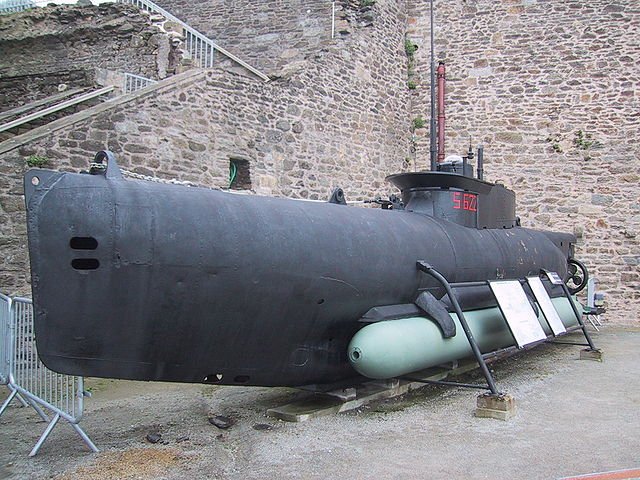


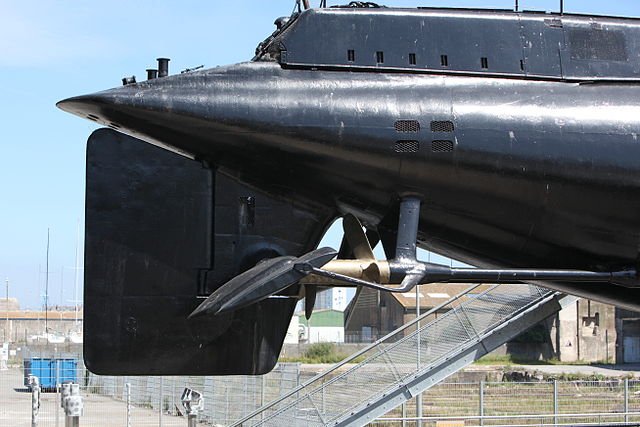

Hello @whileponderin
I salute your doggedness and patience to do a nice job with respect to the details of this article. It is rich and robust. And the pictures alongside your style of writing keeps one spellbound!
The chronicle of development and improvement of submarines from simple primitive structure to a highly effective "marinemachines" they have become today, leaves one one in wonderment as to how man was able to achieve this feat. Indeed, nature inspired inventions on the bases of man's inclination to meet a need.
Awesome exposition!
Regards.
@eurogee of @euronation and @steemstem communities
Smiles.. Nature is really amazing. I marvel everytime I get to study an invention inspired by nature. Man would had been very backward if he had nothing to learn from nature.
Thanks for your kind words, am glad you stopped by @eurogee.
✌️
When i was young, i loved watching James Bond films and his submarine adventures. I kept wondering how life without oxygen was possible in submarines, was not able to get appropriate answer untill i lost that thought.
Not untill now, i never knew the submarine vessels produced the needed oxygen through electrolysis
Thanks for sharing this information
Am honored @oluwambe.. Thank you so much for taking your time to read my post..
Nice one @whileponderin
Submarines are the ones which always excites me If I have given a chance of choosing a war machine I will choose this only. On the research part, an artificial shark skin inspired layer is been used to increase the speed of submarine and ships too.
Cheers
Quite true @vinamra.. That artificial shark skin also help prevent biofouling. Am glad you stopped by..
I really loved it. I cannot describe how ambitious i'm to dive in the depth of sea. I have wrote many poems about sea and sea life. The waves, the flow of water, the creature of sea everything just amazed the human eye.
@sadiaanyat, hello. We share the same Passion! Not just the sea, I marvel each time I watch nature. Sometimes I can't help but wonder which intelligence is behind all these, for nature is too organized and awesome to be a product of chaos. Am glad you loved the piece. Can't wait to read your poems tonight. Much love!
Not just the sea. i think each and every grain of universe have ability to left the men in wonder. You actually are blessed with the chance of exploring the universe in depth.
hahhaha..thank you and let me know if you like my poems or should i do some changes over there
Regard
Sadia Anayat
Hi @whileponderin!
Your post was upvoted by utopian.io in cooperation with steemstem - supporting knowledge, innovation and technological advancement on the Steem Blockchain.
Contribute to Open Source with utopian.io
Learn how to contribute on our website and join the new open source economy.
Want to chat? Join the Utopian Community on Discord https://discord.gg/h52nFrV